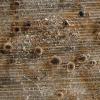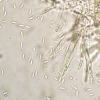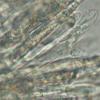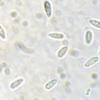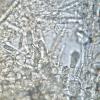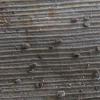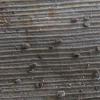
20-12-2025 23:08
Patrice TANCHAUDBonsoir, récolte sur sol sablonneux dans l'arri�

20-12-2025 15:47
Mirek GrycHi.These grew on pine wood that was heavily covere

18-12-2025 21:17
Pol DebaenstThe identification took me to Byssonectria deformi

15-12-2025 07:09
 Danny Newman
Danny Newman
indet. Rutstroemiaceae sp. on unk. fallen leavesMc

19-12-2025 10:10
Patrice TANCHAUDBonjour, récolte réalisée en milieu dunaire, a

18-12-2025 17:23
 Bruno Coué
Bruno Coué
Bonjour,je serais heureux d'avoir votre avis sur c

18-12-2025 18:07
Margot en Geert VullingsThese plumes were found on rotten wood.They strong

17-12-2025 18:35
 Michel Hairaud
Michel Hairaud
Bonjour à tous/Hi to everyone I am passing along
Suprice on Typhus
Marja Pennanen,
28-05-2010 13:51
They have turned brown, are hairy and about I mm wide.
Marja Pennanen,
28-05-2010 13:56
Marja Pennanen,
28-05-2010 13:58
Hans-Otto Baral,
28-05-2010 14:31

Re:Suprice on Typhus
Hi Marja
Typhus and cholera! Don't know what that is. Paraphyses resemble Psilachnum, but hairs???
Again, the excipulum could perhaps help to find a genus.
Zotto
Typhus and cholera! Don't know what that is. Paraphyses resemble Psilachnum, but hairs???
Again, the excipulum could perhaps help to find a genus.
Zotto
Marja Pennanen,
28-05-2010 15:02
Hans-Otto Baral,
28-05-2010 15:31

Re:Suprice on Typhus
A globulosa and lanceolate paraphyses... I remember the genus Mollisiopsis which is perhaps not more than a Mollisia with lanceolate paraphyses, but without guaranty. Maybe you get a yellow reaction of the VBs when you add KOH?
Zotto
Zotto
Marja Pennanen,
28-05-2010 15:42
Re:Suprice on Typhus
Ok,
I'll test that after making rhubarb pie.
Some of Mollisina hairs resembled these hairs.
I've got no information of the genus Mollisiopsis :(
Thankfully: Marja
I'll test that after making rhubarb pie.
Some of Mollisina hairs resembled these hairs.
I've got no information of the genus Mollisiopsis :(
Thankfully: Marja
Hans-Otto Baral,
28-05-2010 15:54

Re:Suprice on Typhus
I am perhaps wrong because Mollisiopsis lanceolata is a Pyrenopeziza. Mollisia clavata on Rubus has a tendency to lanceolate paraphyses.
Maybe Andreas knows something.
Zotto
Maybe Andreas knows something.
Zotto
Hans-Otto Baral,
28-05-2010 15:54

Re:Suprice on Typhus
I am perhaps wrong because Mollisiopsis lanceolata is a Pyrenopeziza. Mollisia clavata on Rubus has a tendency to lanceolate paraphyses.
Maybe Andreas knows something.
Zotto
Maybe Andreas knows something.
Zotto
Marja Pennanen,
28-05-2010 16:56
Re:Suprice on Typhus
Hello,
I got no yellow reaction, but on the other hand my KOH may be too old.
What I saw was some more hairs. They can be clavate, septate and size even 60x6 micrometers.
I saw some crystals, but they can come anywhere, because I meshed in sampling, The specimen was drying and hard to handle.
I'll send this to Seppo one day with some other interesting species. If this is a Mollisiopsis it would propably be a new genus for Finland-or maybe not...
Marja
I got no yellow reaction, but on the other hand my KOH may be too old.
What I saw was some more hairs. They can be clavate, septate and size even 60x6 micrometers.
I saw some crystals, but they can come anywhere, because I meshed in sampling, The specimen was drying and hard to handle.
I'll send this to Seppo one day with some other interesting species. If this is a Mollisiopsis it would propably be a new genus for Finland-or maybe not...
Marja
Marja Pennanen,
02-06-2010 11:59
Re:Suprice on Typhus
Hello again
I've got a suggestion of Hysterostegiella-genus for this.
There even seems to be H. typhae species.
Naturally I've got no information of the genus or species :(
Anyway determination is proceeding...
Greetings: Marja
I've got a suggestion of Hysterostegiella-genus for this.
There even seems to be H. typhae species.
Naturally I've got no information of the genus or species :(
Anyway determination is proceeding...
Greetings: Marja
Hans-Otto Baral,
02-06-2010 12:43

Re:Suprice on Typhus
Hi Marja
yes!! there is even the lateral epidermial lid visible on your photo, by which the young apos are covered.
The species is redescribed in Hein 1983: 684,and a distribution map shows that it was only known from some finds in eastern Germany.
The only probvlem is that Hein keys H. typhae with apothecia min. double as long as wide. Perhaps herbarium material does not swell enough? Or he gained this character from the dry state as h referred to his REM image with half closed lid.
Zotto
yes!! there is even the lateral epidermial lid visible on your photo, by which the young apos are covered.
The species is redescribed in Hein 1983: 684,and a distribution map shows that it was only known from some finds in eastern Germany.
The only probvlem is that Hein keys H. typhae with apothecia min. double as long as wide. Perhaps herbarium material does not swell enough? Or he gained this character from the dry state as h referred to his REM image with half closed lid.
Zotto
NC NC,
03-06-2010 22:08
Marja Pennanen,
03-06-2010 22:12
Hans-Otto Baral,
03-06-2010 22:30

Re:Suprice on Typhus
That's fine! the epidermial lid is elongate, like Hein reports.
Zotto
Zotto

